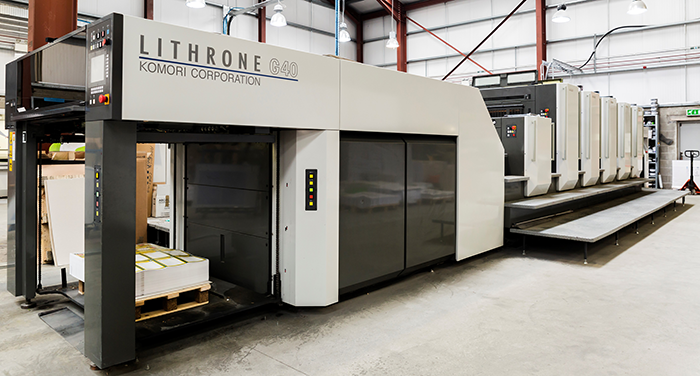All You Should Know About litho printing
Wiki Article
A Comprehensive Overview to Recognizing Litho Printing Methods
The world of litho printing, a method originating from the late 18th century, is a fascinating mix of history, science, technology and art. This detailed guide will certainly unwind the complexities of this printing method, from the composition of litho inks to the difficulties faced in modern applications. As we venture right into the details of lithography, the relevance of automation and sustainability in ensuring its future significance becomes increasingly clear. Stick with us as we trip right into the captivating realm of litho printing.The Historical Advancement of Litho Printing
The historical trajectory of litho printing, a pivotal innovation in the world of communication, is an exciting story of human resourcefulness. The process advanced with the arrival of the rotating press, which greatly enhanced performance. Each phase of litho printing's evolution showcases humankind's relentless quest of efficiency and quality in visual communication.Deciphering the Science Behind Litho Printing Inks
Relocating onward in the expedition of litho printing strategies, the emphasis now moves to the science behind litho printing inks. The composition of these inks, their drying procedure, and shade mixing techniques create the backbone of this complex art kind. Understanding these aspects is crucial to grasping the craft and attaining the wanted print outcomes.Composition of Litho Inks
In lithographic printing, the essential duty of litho inks can not be overstated. The composition of litho inks differs relying on its purpose, however usually, they are composed of 2 major parts - pigments and lorries. Pigments, the color-providing components, are finely ground bits suspended in the car, a fluid that carries the pigment onto the printing surface area. The lorry is an intricate blend of oils, solvents, and resins, which influence the ink's drying time, attachment, and gloss. Additionally, numerous ingredients are present to enhance particular buildings like circulation, drying out, and resistance to environmental impacts. Each element plays an important part in the final print's high quality, making the specific formulation of litho inks a complex scientific research.Ink Drying Process
From the composition of litho inks, focus turns to the remarkable procedure of ink drying. The drying process is important, as it impacts the last print's top quality and long life. 2 key methods are made use of in litho printing: oxidative drying out and absorption. Oxidative drying out entails the ink reacting with oxygen airborne to form a difficult, dry movie. This approach gives a resilient finish, but can be slower contrasted to absorption. Absorption, on the various other hand, includes the ink seeping into the paper fibers, which is a quicker process but can cause much less vivid shades. The option in between these approaches is dependent upon factors such as print rate requirements, the paper type utilized, and the preferred finish.Shade Combining Methods
While the drying out process plays a key role in litho printing, the scientific research of shade mixing methods holds equivalent importance. The science behind litho printing inks additionally takes right into account the openness of the ink, which influences just how colors overlay and mix.The Art and Design Elements in Litho Printing
Litho printing breathes life right into art and layout through its distinct components. The procedure includes creating a picture on a lithographic sedimentary rock plate or steel plate with a smooth surface. The image is then published onto a look at this now tool, typically paper, by moving the ink from the plate. What collections litho printing apart from this source is its ability to duplicate complex designs with high fidelity, making the outcome virtually the same to the original artwork. This is achieved via the usage of various line methods such as hatching, cross-hatching, and stippling, which permit a range of tonal results. Litho printing accommodates a variety of colors, allowing artists to produce vivid and dynamic prints. This combination of accuracy and flexibility makes litho printing a preferred choice for numerous musicians and designers.Modern Applications of Litho Printing Methods
Litho printing techniques have located comprehensive usage in the modern-day industrial market. Its impact and value proceed to grow with the arrival of brand-new technologies and modern technologies in the field. This section will certainly explore these contemporary applications and the transformative function they play in the printing sector.
Industrial Litho Printing Utilizes
Litho printing stays a vital component of the commercial market. High-volume printing tasks, such as the production of publications, newspapers, and packaging, depend on litho printing for its capability to provide remarkable picture quality and price performance. Litho printing likewise gives a broad shade spectrum, remarkable to that of digital printing.Innovations in Litho Printing
Pushing the borders of conventional strategies, modern-day innovations have actually sustained a host of advancements in litho printing. One noticeable advancement is electronic litho printing, which combines the virtues of digital modern technology with litho's top quality output. These advancements underscore the long-lasting significance of litho printing in the contemporary globe.Exploring the Process of Litho Printing: Detailed

Challenges and Solutions in Contemporary Litho Printing

Despite the accuracy and custom that litho printing happily supports, it is not without its set of contemporary challenges. Digital litho printing allows for cost-efficient short runs and very easy personalization, addressing the problem of variable data. Thus, while there are obstacles, the litho printing sector is proactively adapting to satisfy them head-on, ensuring its significance in the future.
Conclusion
In verdict, litho printing, with its rich background and clinical complexities, holds a considerable area in the print Get More Info market. The future of litho printing hinges on its capability to adapt to these altering needs, verifying its long-lasting worth in a developing market.
Report this wiki page